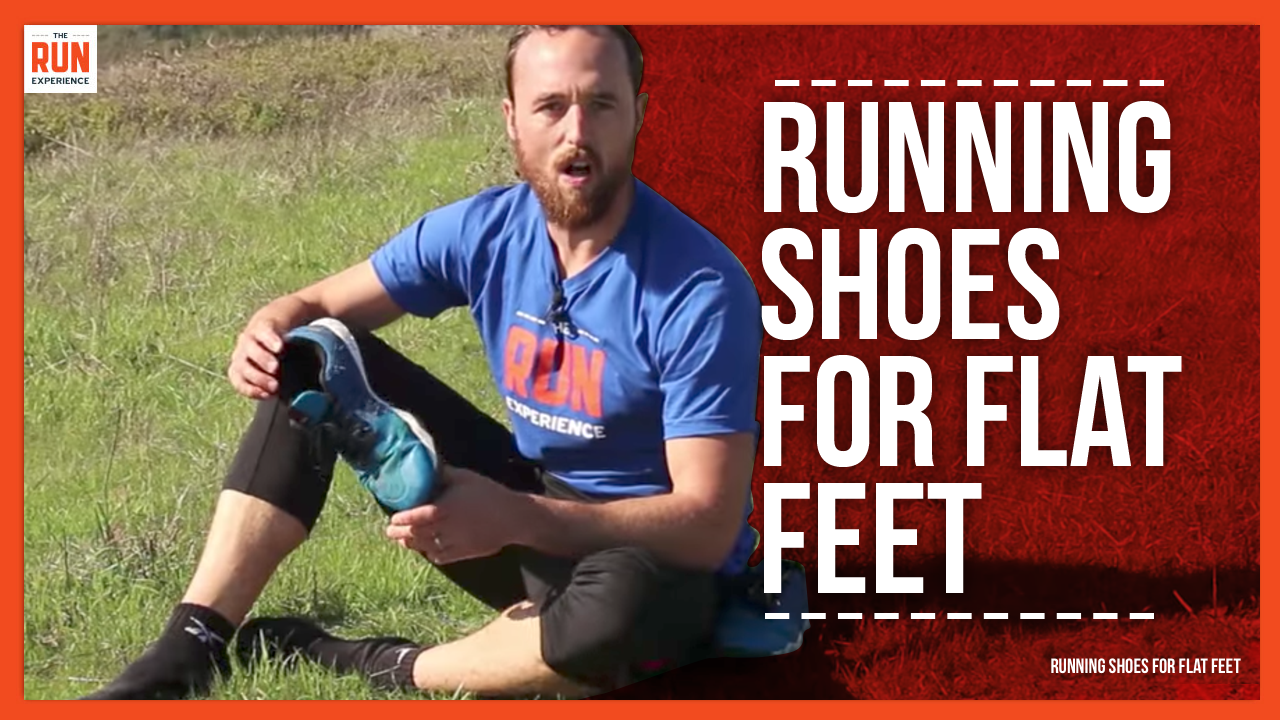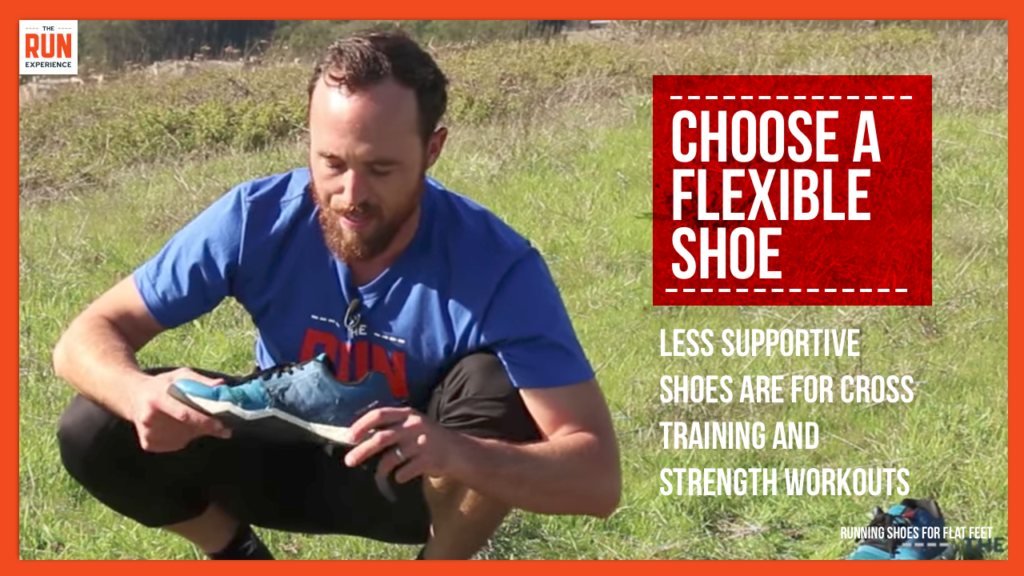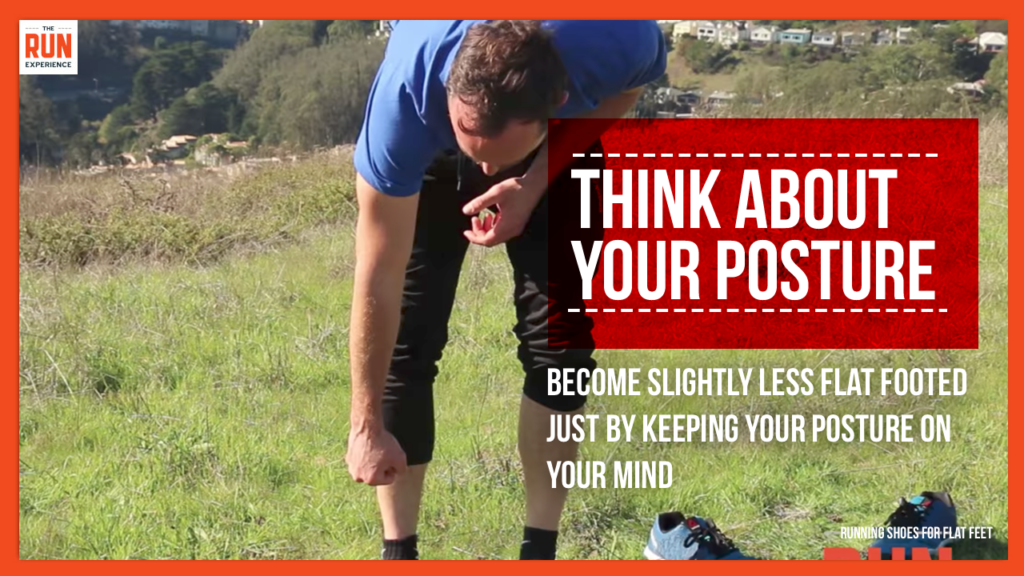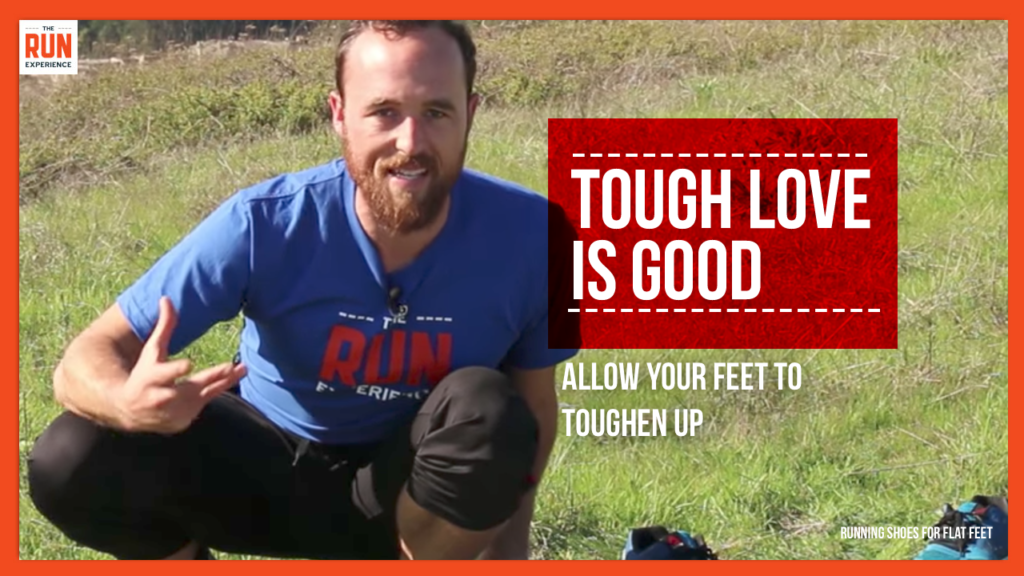Running Shoes for Flat Feet - How to Choose the Best One
Are you a runner with flat feet? Get the tips from experts to select the best running shoes for flat feet and run injury free.

You have tons of options when it comes to running shoes for flat feet. While there is no one right shoe for every flat-footed runner, we have tips for what key features you should be looking for in a shoe. Just as important, we give you tips on how you can build an injury-reducing spring back into your step!
Features of Running Shoes For Flat Feet

The primary function of a shoe is to protect our feet from the elements. Rocky trails, rough asphalt, cold weather, or hot pavement are all good reasons to slip into a pair of shoes.
Shoes designed for flat feet typically combine cushioning with varying amounts of arch support.

Take note: no matter how much cushioning your shoe has, it’s actually your natural pronation–that springiness of your arch–that provides shock absorption while you run. Too much support in a shoe that is too rigid can inhibit your mechanics and cause complications.
The key is to find a shoe that has the following:
- Arch Support: Shoes with strong arch support help distribute pressure more evenly across your feet, which can alleviate pain and discomfort associated with flat feet.
- Stability: Look for shoes that offer stability features to control overpronation (the inward rolling of the foot). This can help prevent your feet from turning too much inward during movement.
- Motion Control: Shoes with motion control help limit excessive foot movement. They are typically more rigid and durable, providing the necessary control for flat-footed individuals.
- Cushioning: Adequate cushioning is important to absorb impact and reduce stress on your joints during high-impact activities.
- Wide Toe Box: A wide toe box can provide additional comfort and accommodate foot shape variations often seen in individuals with flat feet.
Once you have footwear that meets these requirements, it’s time to work on your natural shocks.
What Are the Best Workout Shoes for Flat Feet?
While running and workout shoes for flat feet will come and go with each new season and year, here are a few of our favorite flat foot running shoes as of now:
- Asics Gel Kayano: Known for its exceptional support and cushioning, the Asics Gel Kayano series is a popular choice for runners with flat feet. It offers significant stability and motion control features that are ideal for overpronators.
- Brooks Adrenaline GTS: The Brooks Adrenaline GTS line is designed with the brand's GuideRails technology, providing excellent support by keeping excess movement in check. This shoe is well-suited for those who need both arch support and stability.
- New Balance 990 Series: New Balance 990 series shoes are celebrated for their comfortable fit and substantial arch support. They also offer a good balance of cushioning and stability, making them a great all-around choice for flat feet.
- Saucony Guide: The Saucony Guide offers a responsive cushioning system and is designed with features that provide stability for mild to moderate overpronators. Its structured support helps maintain the correct foot alignment during workouts.
- Nike Structure: Nike Structure is designed for runners who seek both support and cushioning. Its technology helps to correct overpronation while providing a comfortable, responsive base.
- Mizuno Wave Inspire: Mizuno Wave Inspire provides a unique balance of support, stability, and cushioning, thanks to its Wave technology. It's an excellent option for flat-footed individuals looking for a shoe that offers both motion control and flexibility.
When choosing workout shoes for flat feet, it's important to consider the type of activities you'll be using them for—whether it's running, cross-training, or other types of exercise. Trying on shoes and walking or running in them (if possible) before purchasing is crucial to ensure they meet your specific needs and comfort preferences.
Running Shoes for Flat Feet: Strengthen Your Feet

The simplest way to improve your foot mechanics is to just take off your shoes.
If you are like most of us, you spend a good portion of your day in shoes. By going barefoot you are asking your feet to do more of what they were designed to do–support you as you move!
So how do you get started?
There are a number of easy and effective exercises that you can include in your running workout plan to you improve your foot strength. While going barefoot sounds easy, if you have spent a lifetime in supportive shoes, you may have to work out of them gradually. As your foot strength improves, add in drills that demand more of your feet.
To begin, try out these tips:
- Become mindful of your posture, and “screw” your foot lightly into the ground. It rotates the knee outward, straightens the hip, and the arch automatically raises.
- Go barefoot and balance. Pay attention to posture, and stand on one foot as long as you can. When you can’t keep good form, it’s time to switch sides.
- Grab a jump rope and alternate hopping on both feet, and one at a time. Try to land gently and resist letting the knee collapse inward.
Once you have the basics down, aim to explore more drills for foot and ankle strength. As you demand more of your feet, improved foot mechanics will make you a stronger, less injury-prone runner and a more agile athlete.
And couldn’t we all stand (in our bare feet 🙂 ) for fewer injuries?
